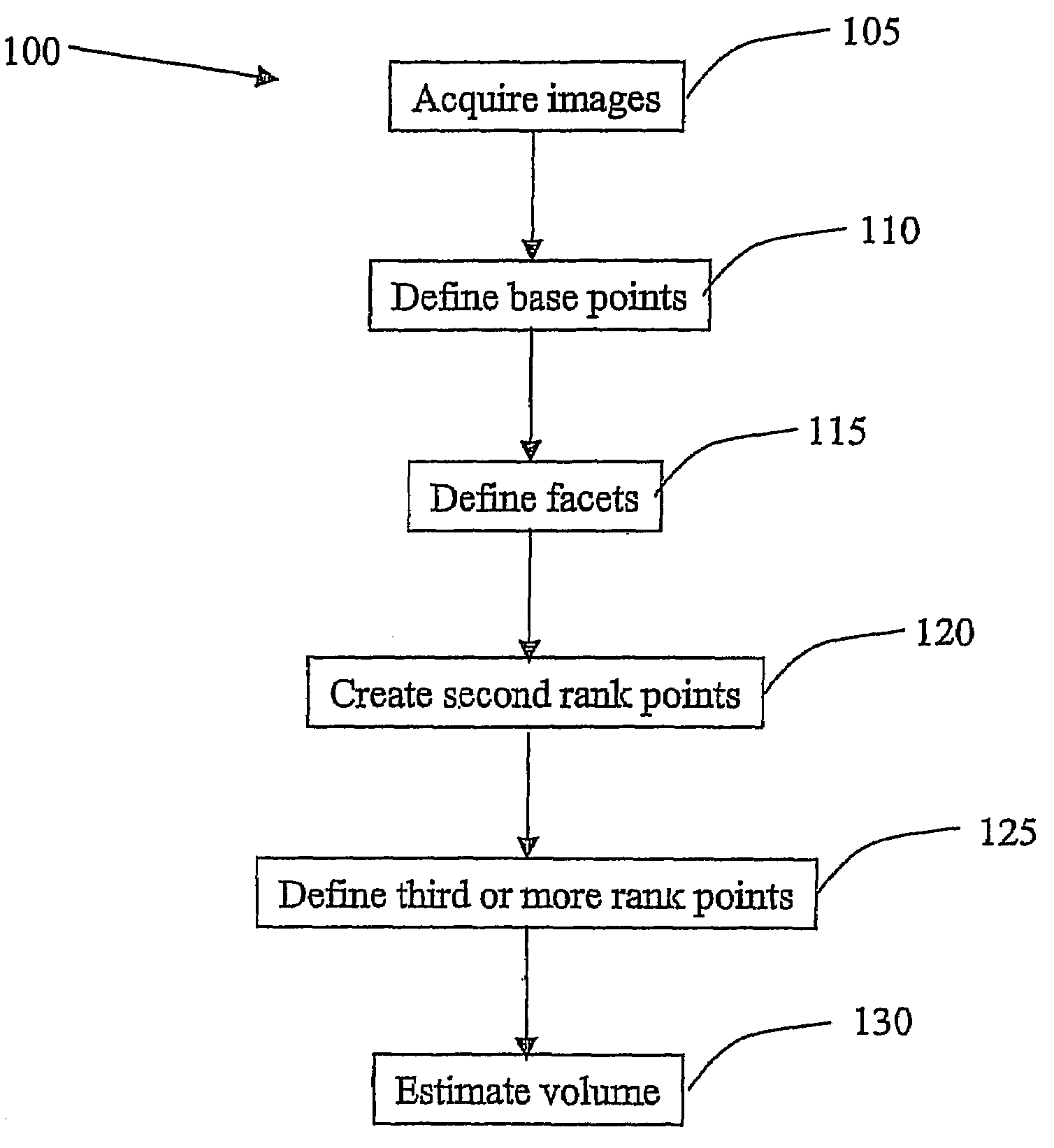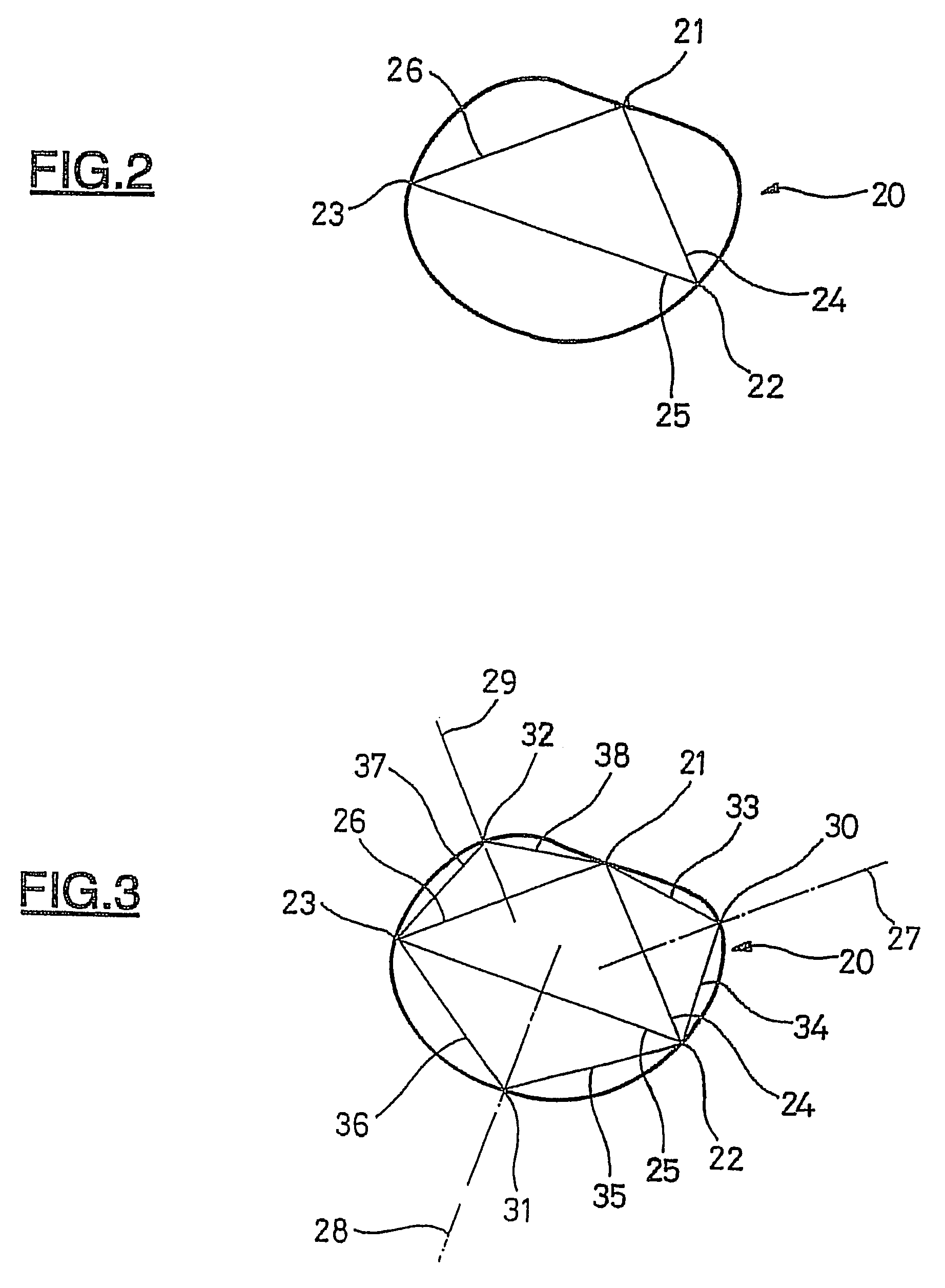Method of semiautomatic segmentation for the estimation of three-dimensional volumes
a three-dimensional object and semi-automatic segmentation technology, applied in image data processing, computation using non-denominational number representation, complex mathematical operations, etc., can solve the problems of slow and painstaking work, and achieve the desired precision, short time, and convenient use
- Summary
- Abstract
- Description
- Claims
- Application Information
AI Technical Summary
Benefits of technology
Problems solved by technology
Method used
Image
Examples
Embodiment Construction
[0027]As can be seen in FIG. 1, a final shape approximating a three-dimensional object is formed by a plurality of facets defined by three segments, for example, segments 1 to 3, defining a flat triangular surface 4. The volume of the three-dimensional object, not represented, is thus approximated by means of triangular surfaces, the coordinates of whose vertex points are known. The volume of the shape can thus be calculated.
[0028]An operator begins by defining six points of the object, an upper point 11, a lower point 12, a left side point 13, a right side point 14, a front point 15 and a back point not visible in FIG. 1. This first shape thus roughly defines the three-dimensional object, and these six points must be positioned precisely, for on their definition depends that of the future adjacent points. In order to obtain a satisfactory definition, it may be necessary to check their positioning on different sections of the object.
[0029]After having defined the six first points, a...
PUM
 Login to View More
Login to View More Abstract
Description
Claims
Application Information
 Login to View More
Login to View More - R&D
- Intellectual Property
- Life Sciences
- Materials
- Tech Scout
- Unparalleled Data Quality
- Higher Quality Content
- 60% Fewer Hallucinations
Browse by: Latest US Patents, China's latest patents, Technical Efficacy Thesaurus, Application Domain, Technology Topic, Popular Technical Reports.
© 2025 PatSnap. All rights reserved.Legal|Privacy policy|Modern Slavery Act Transparency Statement|Sitemap|About US| Contact US: help@patsnap.com



